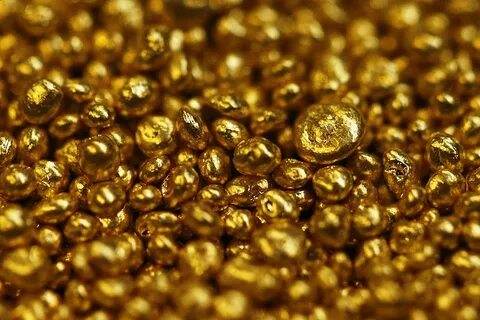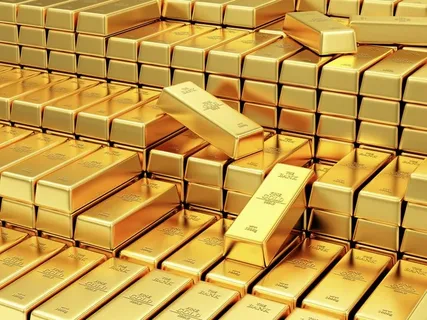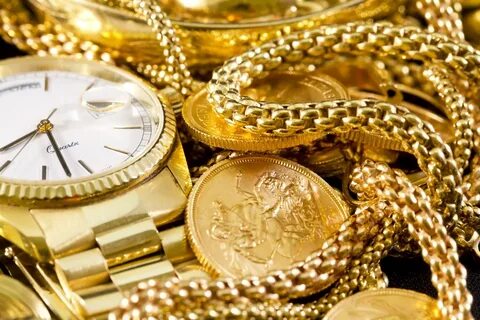Precious metal prices have always been known for their inherent volatility. This volatility is influenced by a myriad of factors, including global economic conditions, geopolitical events, and supply and demand dynamics. Fluctuating precious metal prices can have a significant impact on various industries and investment portfolios. In this article, we will explore the reasons behind the fluctuation of precious metal prices, and what you need to know to navigate through these price changes effectively.
Fluctuating precious metal prices are a common occurrence in the financial market. These fluctuations can be influenced by a variety of factors, including changes in global economic conditions, political instability, and shifts in supply and demand.
Investors in precious metals such as gold, silver, platinum, and palladium should be aware of these fluctuations and stay informed about the current market trends. It’s important to keep an eye on the latest news and analysis related to precious metals in order to make informed investment decisions.
Additionally, understanding the various factors that can impact precious metal prices can help investors anticipate potential market movements. While no one can predict the future with certainty, having a good grasp of these factors can be beneficial when it comes to managing your investment portfolio.
Finally, it’s important to have a long-term perspective when it comes to investing in precious metals. While short-term fluctuations can be unsettling, precious metals have historically been a store of value and a hedge against inflation. Understanding and being prepared for these fluctuations can help investors stay focused on their long-term investment goals.
The Impact of Global Events on Precious Metal Prices

The impact of global events on precious metal prices is significant. Events such as geopolitical tensions, economic crises, natural disasters, and pandemics can cause a sudden increase in demand for precious metals as safe-haven assets. This increased demand can drive up the prices of precious metals such as gold, silver, and platinum.
For example, during times of political instability or conflict, investors often turn to precious metals as a store of value, causing their prices to surge. Similarly, economic downturns can lead to a flight to safety, driving up the prices of precious metals. The COVID-19 pandemic also had a major impact on precious metal prices, as investors sought out safe-haven assets amidst the uncertainty and volatility in the financial markets.
On the other hand, positive economic news or geopolitical stability can have the opposite effect, causing a decrease in demand for precious metals and leading to a decline in prices. Overall, global events play a crucial role in shaping the prices of precious metals, making them highly sensitive to geopolitical and economic developments.
Forecasting the Future of Precious Metal Prices
See also: gold detector metal detector

Predicting the future prices of precious metals involves analyzing various factors such as supply and demand, economic indicators, geopolitical events, currency movements, and market sentiment. Analysts and experts use both fundamental and technical analysis methods to forecast the potential direction of precious metal prices. Fundamental analysis involves examining the underlying factors that could influence supply and demand, such as mining production, industrial demand, and central bank policies. Technical analysis, on the other hand, focuses on historical price patterns and market trends to identify potential price movements. Additionally, macroeconomic factors such as inflation, interest rates, and overall market conditions also play a significant role in forecasting precious metal prices. It is important to note that predicting the future prices of precious metals is inherently uncertain and subject to various risks, and investors should carefully consider the potential impact on their investment decisions.
Understanding the Factors Affecting Precious Metal Prices

Understanding the factors affecting precious metal prices involves taking into account a variety of economic, financial, and geopolitical influencers. These may include supply and demand dynamics, inflation rates, interest rates, currency movements, political stability, and global economic trends. Additionally, factors specific to precious metals, such as production costs, industrial uses, and investor sentiment, also play a significant role in determining their market value. Analyzing these complex interactions can provide valuable insights for investors, industry professionals, and policymakers seeking to better comprehend and anticipate price fluctuations in the precious metals market.
Investing in Uncertain Times: Precious Metal Prices Analysis

Investing in Uncertain Times: Precious Metal Prices Analysis is a comprehensive guide that analyzes the fluctuations in precious metal prices during uncertain economic conditions. The report provides insights into the historical performance of precious metals such as gold, silver, and platinum, and their potential as a safe-haven investment during times of market volatility. Additionally, the analysis delves into the factors that can impact precious metal prices, including inflation, geopolitical tensions, and currency devaluation. This information can be valuable for investors looking to diversify their portfolios and hedge against potential market downturns. By understanding the dynamics of precious metal prices in uncertain times, investors can make informed decisions to safeguard their wealth and potentially capitalize on market opportunities.
Comparing Historical Data to Current Precious Metal Prices
Comparing historical data to current precious metal prices involves analyzing the price movements of precious metals over a period of time. This can provide insights into how the market has fluctuated and help investors make informed decisions. By looking at past trends and comparing them to current prices, investors can identify potential opportunities and risks in the market. This analysis can also be used to forecast future price movements and create strategies for trading or investing in precious metals. Overall, comparing historical data to current prices is an important aspect of analyzing the precious metals market and making sound investment decisions.
The Role of Supply and Demand in Precious Metal Prices
The role of supply and demand in precious metal prices is significant. When demand for precious metals such as gold, silver, and platinum increases, their prices tend to rise. This is because higher demand puts pressure on the available supply, causing prices to go up.
Conversely, when demand decreases or when there is a surplus of supply, prices tend to fall. Factors that can influence demand for precious metals include economic conditions, geopolitical tensions, and investor sentiment. For example, during times of economic uncertainty, demand for precious metals as a safe-haven investment often rises, leading to higher prices.
On the supply side, factors such as mining output, recycling rates, and central bank sales can impact the availability of precious metals in the market. Additionally, production costs and mining regulations can affect supply levels. Changes in supply can lead to shifts in prices as well.
Overall, supply and demand dynamics play a key role in determining the prices of precious metals, and understanding these factors is crucial for investors and market participants.
Exploring the Relationship Between Currency and Precious Metal Prices
Exploring the relationship between currency and precious metal prices involves analyzing the impact of currency fluctuations on the value of precious metals such as gold, silver, and platinum. Currency movements affect the prices of precious metals both directly and indirectly.
When the value of a currency depreciates, it often leads to an increase in the price of precious metals. This is because investors view precious metals as a safe-haven asset during times of currency devaluation and economic uncertainty. On the other hand, a strengthening currency can lead to a decrease in precious metal prices as they become relatively more expensive for investors holding other currencies.
Additionally, the relationship between currency and precious metal prices is influenced by various macroeconomic factors such as interest rates, inflation, and geopolitical events. Changes in these factors can impact the demand for precious metals and consequently affect their prices.
Furthermore, central bank policies and currency interventions can also impact the relationship between currency and precious metal prices. For example, central bank actions such as quantitative easing or tightening can influence currency values and subsequently affect the demand for precious metals.
Overall, exploring the relationship between currency and precious metal prices requires a deep understanding of global economic dynamics and market forces that drive both currency and precious metal markets.
The Effect of Inflation on Precious Metal Prices
The effect of inflation on precious metal prices is typically positive. This is because precious metals such as gold and silver are often viewed as a hedge against inflation. When inflation rises, the purchasing power of fiat currencies declines, leading investors to turn to precious metals as a store of value.
As inflation increases, the demand for precious metals tends to rise, driving up their prices. This is because precious metals are seen as a safe haven investment during times of economic uncertainty and currency devaluation.
Additionally, central banks often increase their gold reserves during periods of inflation to shore up their currency and protect against rising prices. This increased demand from central banks can also contribute to higher precious metal prices.
Overall, the impact of inflation on precious metal prices is generally positive, as they tend to benefit from economic uncertainty and currency devaluation.
Analyzing the Volatility of Precious Metal Prices
Analyzing the volatility of precious metal prices involves studying the fluctuations and variations in the prices of metals such as gold, silver, and platinum over a specific period. This analysis is crucial for investors, traders, and financial institutions, as it helps in understanding the potential risks and potential returns associated with investing in precious metals. By using statistical tools and mathematical models, analysts can measure and assess the volatility of precious metal prices, which in turn can help in making informed investment decisions. Factors such as geopolitical events, economic indicators, and market trends can significantly impact the volatility of precious metal prices, making it essential to conduct thorough analysis to mitigate risks and maximize profits.
Strategies for Profiting from Fluctuating Precious Metal Prices
Investing in precious metals can be a profitable venture, especially when taking advantage of fluctuating prices. One strategy is to buy low and sell high, which involves purchasing precious metals when prices are low and holding onto them until prices increase. Another strategy is to diversify a portfolio by investing in a variety of precious metals, such as gold, silver, platinum, and palladium. Additionally, some investors choose to trade precious metal futures or options contracts, which can provide opportunities to profit from price fluctuations without physically owning the metal. Overall, staying informed about market trends and economic factors that impact precious metal prices is crucial for successfully profiting from their fluctuations.
In conclusion, understanding the factors that influence precious metal prices and staying informed about market fluctuations is crucial for anyone involved in buying or selling these commodities. Whether it’s gold, silver, platinum, or palladium, staying knowledgeable about the market can help investors make informed decisions and potentially capitalize on price movements. It’s important to stay updated on global economic conditions, geopolitical events, and industrial demand, as these all play a role in shaping precious metal prices. By staying informed and being aware of the various factors at play, individuals can navigate the ups and downs of precious metal prices with confidence.
See also
https://www.aucoffre.com/cours-or
https://www.bullionbypost.fr/cours-de-lor/cours-de-lor-aujourdhui/
https://or.bullionvault.fr/Cours-De-L-Or.do







